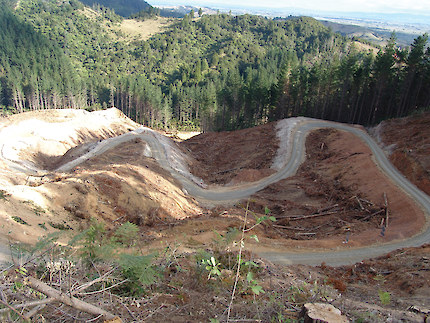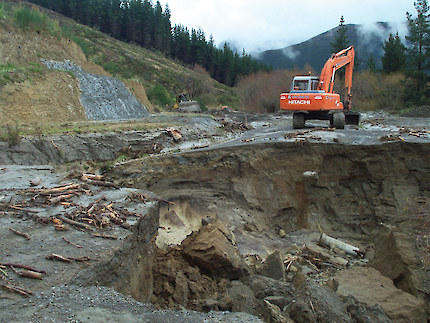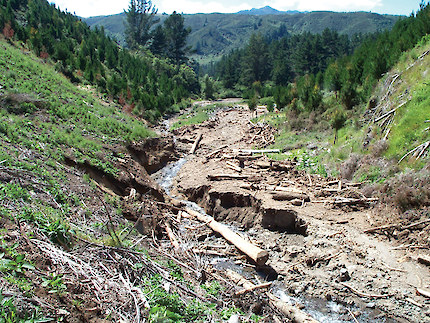Good drainage and sediment control are essential. They help protect roads and landings, and reduce the amount of sediment that gets into waterways. Ongoing sediment harms stream life.

- Drainage is onto stable ground
- Water is cut off as often as possible, to avoid directing lots of water into one place − where it would scour
- Culverts on the top and lower sections of the road are lined up to minimise the amount of water forced into the lower road’s ditch

- Poor water control can quickly cause a lot of damage and erosion
- This leads to expensive road maintenance work
- It also generates fine sediment, which can severely damage stream life

- Drainage is directed away from the fill
- The fill is contained by slash and stabilised by hydroseeding
- Water and sediment control were installed to reduce sediment going into waterways

- Large amounts of fine sediment are in the stream
- If this was the result of poor practice, it could lead to prosecution